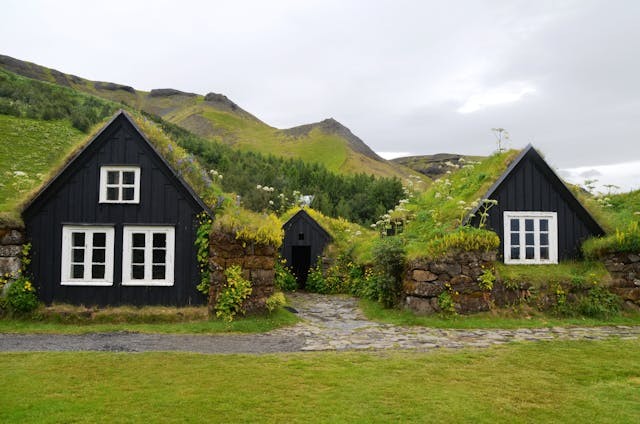
(Photo: Pexels/Pixabay)
Green roofs are gaining popularity due to their benefits, from regulating temperature and biodiversity to saving energy. However, blue-green roofs are reportedly even better.
Why Is a Blue-Green Roof Better Than a Green Roof?
Blue-green roofs appear worldwide: carefully chosen plants growing on buildings explicitly made to handle the additional biomass weight. With its blue-green roofs specifically made to collect rainfall, Amsterdam has gone one step further in this regard.
While green roofs may absorb some rainwater to help hydrate the plants above, blue-green roofs go one step further by incorporating extra infrastructure to collect, store, and distribute the liquid to building occupants for toilet flushing and plant watering.
The system has layers. Above ground, the vegetation consists of various mosses, shrubs, grasses, ferns, herbs, or sedum, a resilient plant species commonly found on green roofs.
Smart valves control the water levels in the blue-green roof. The mechanism will release stored water from the roof ahead of time if the weather forecast indicates an impending storm. In this manner, the roof replenishes itself during a downpour, preventing rainwater from clogging nearby gutters and sewers. Stated differently, the roof turns into a sponge that the operator can squeeze out as needed.
In addition to their sponge-city advantages, blue-green roofs can significantly raise a building's top level by "sweating" stored water. The proper native plant varieties can help increase biodiversity by attracting native pollinating insects.
To take things a step further, researchers are experimenting with rooftop agrivoltaics --growing crops on roofs covered in solar panels. In theory, the use of blue-green systems might increase the solar panels' efficiency by chilling them with the evaporating water.
ALSO READ: Green Hydrogen Explained: Is It Feasible to Use Clean Energy Mainstream?
Blue-Green Roof Is Not For Every Building
Cities may even offer tax breaks to encourage the installation of blue-green roofs, compensating building owners for minimizing the amount of rainwater they contribute to the overloaded water and sewer systems. Similar laws have been implemented in American cities like Los Angeles and Pittsburgh, which encourage landowners to create gardens and other green areas by taxing impermeable surfaces on their property, such as concrete.
However, not all buildings can apply the blue-green roof technology. The extra infrastructure's water is heavier than the infrastructure itself; therefore, it is reasonably accessible and inexpensive to incorporate the system into new construction to account for the additional weight. However, older buildings may require retrofit.
In the long term, lowering the quantity of water a building needs to purchase from a municipal system can save money. As with any technology, its cost will decrease with increased adoption.
RELATED ARTICLE: Watch Tardigrades Walk on Microscopic Level; Water Bear Movements Surprisingly Familiar in Astonishing Video
Check out more news and information on Sustainability in Science Times.










!['Cosmic Glitch' in Einstein's Theory of General Relativity Could Be Explained in This New Scientific Tweak [Study]](https://1721181113.rsc.cdn77.org/data/thumbs/full/53435/258/146/50/40/cosmic-glitch-in-einsteins-theory-of-general-relativity-could-be-explained-in-this-new-scientific-tweak-study.jpeg)



